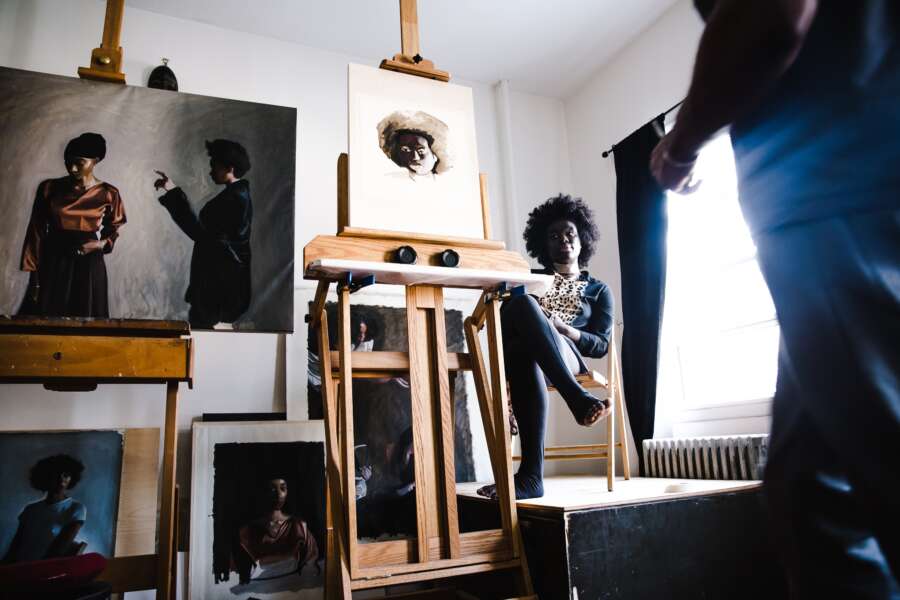By: Anya Zakharova, Managing Director of Stellar International Art Foundation
Covid-19 has created a year of uncertainty and drastic change in every echelon of society, with the art sector being no different. The industry was heavily affected by lockdowns, travel bans and social distancing, all of this leading to a slowdown in sales, drought of fairs and closure of galleries. Yet at the same time, the industry has proved itself to be incredibly agile, with increasing online sales and art fairs and viewing rooms going digital, this allowing the industry to avoid a total standstill and enabling it to tap into new customers.
With galleries and exhibits forced to shut for the best part of a year, it is no surprise art sales fell
quite dramatically during 2020, with a global drop of 22%. This is a substantial amount which cannot
be overlooked, but it doesn’t mean the industry won’t eventually return to pre pandemic levels.
One reason I am confident the art sector will bounce back, is that art is typically bought by
individuals with expendable incomes. In contrast to the 2007-2008 financial crisis, the super-rich
have actually become richer during the pandemic as financial stimulus and volatile markets have
served to increase their fortunes. After the global financial crisis, the industry fell by 40%, but
managed to fully recover by 2010, indicating that the bounce back will likely be quicker after Covid.
There is also an expectation that many people have been holding onto their money until they can
view art in person again.
Along with the art industry being able to hold onto its normal clients, Covid has also led to the sector
becoming more flexible and adapting its operations. This has allowed the industry to tap into a new
group of customers, which is clear when you consider that despite overall sales having fallen, online
sales have been on the rise. The most influential auction houses like Sotheby’s and Christies
managed to adapt quickly to lockdown restrictions, updating the way they market and display
artwork. They produce videos with art experts talking about individual pieces while the piece
rotated, allowing customers to see every inch of the work. Additionally, artists have used the
impetus of lockdowns to set up their own websites, to curate their own shows and display their art
on social media, this allowing them to display their art for potential buyers to see, without the
extortionate fees of renting a gallery space.
With the limits on viewing artwork in person, condition reports have become an even more vital part
of buying and selling art. These reports tell buyers everything they need to know about the work
which they may not be able to see from an image online. They go into immense detail, telling of
cracks and scratches on the piece, or even if the signature is at a slight angle. Having these reports
gives customers the reassurance that what they are buying has been checked and allows them to be
sure of the condition of the piece once it gets to them. This has helped tremendous amounts during
Covid to allow the sale of art to continue.
Despite of these advancements, people do like to see art before they buy it, not only to consider
their purchases, but also as auction houses are seen as a great way to learn about the industry. After
Covid, naturally many people will be itching to get back to the auction houses and exhibits, but the
digitalisation of art sales has also opened the industry up to a younger generation of customers.
Sotheby’s even reported that over a third of online buyers were transacting with the auction house
for the first time and that over a quarter were under the age of 40. Young people have always been
more comfortable doing things online, including making big purchases, so the new digital sales of art
is going to be more open and inclusive than ever before, especially for younger generations.
Not only has the art world become open to the digitalisation of sales, but also art in the form of NFTs
(non-fungible tokens). Beeple’s Opus, which is a pioneering piece of work created over 5,000 days.
This piece sold for $69,346,250 and is a fine example of the new acceptance of digital artwork.
The art world looks like it will make a swift recovery after the past year of uncertainty, yet it will not
be without the loss of smaller galleries, female and emerging artists have been forced to step back
from their art careers. This has led to the industry becoming even more exclusive, an issue which
organisations like Stellar International Art Foundation look to tackle through their work. Since 2018,
we have supported women and emerging artists by giving them a platform to display and promote
their work, something we feel is incredibly important when the majority of artists displayed in major
museums and galleries and the topmost profitable artists continue to be white and male.
There has been considerable noise about art market disruption forced by the pandemic. Yet the
sector has also handled the pandemic with impressive versatility and adaptability and these new
initiatives will keep the industry on trajectory for a strong recovery. For these reasons, I believe now
is an appealing and exciting time to invest in art.
